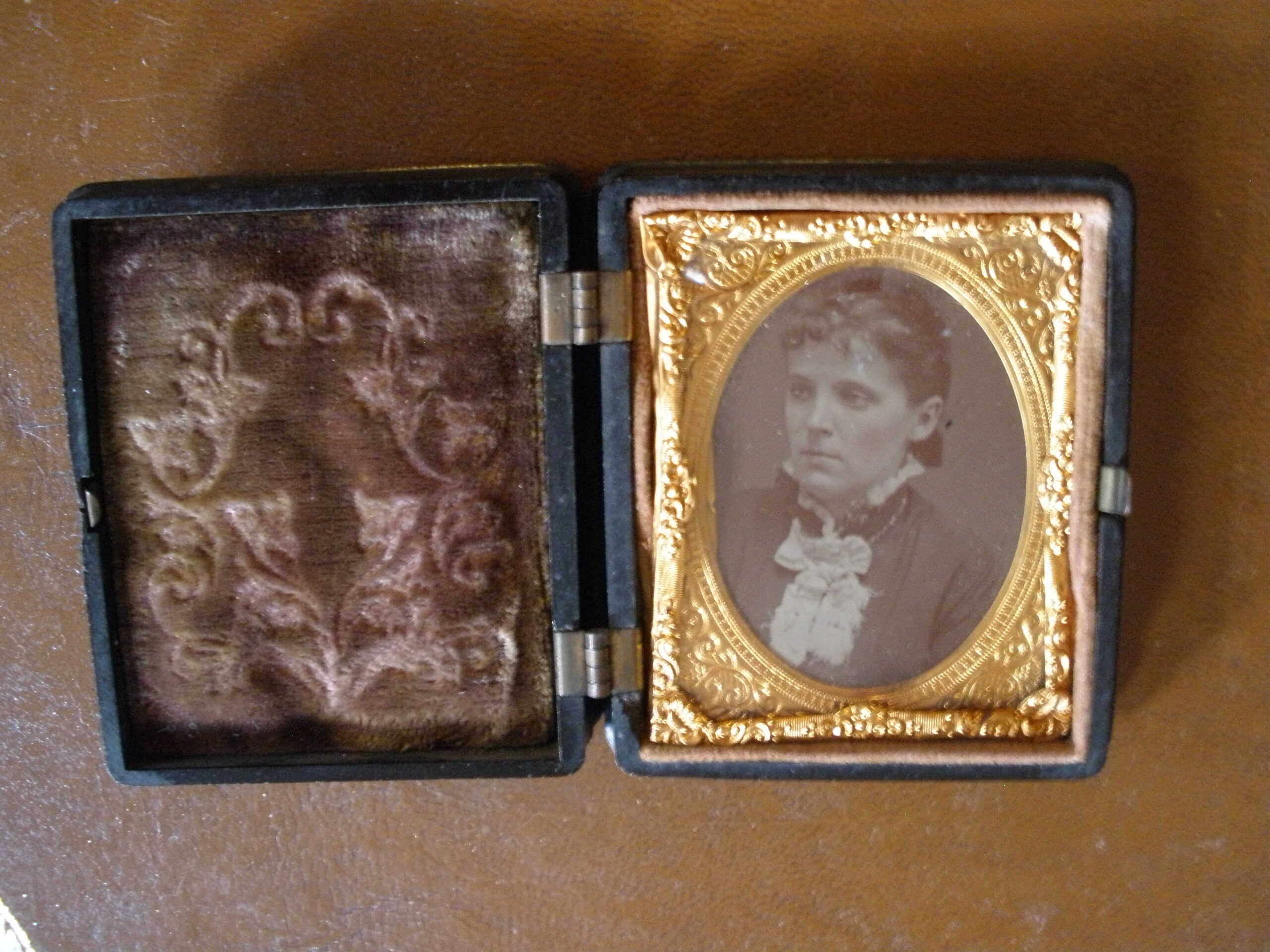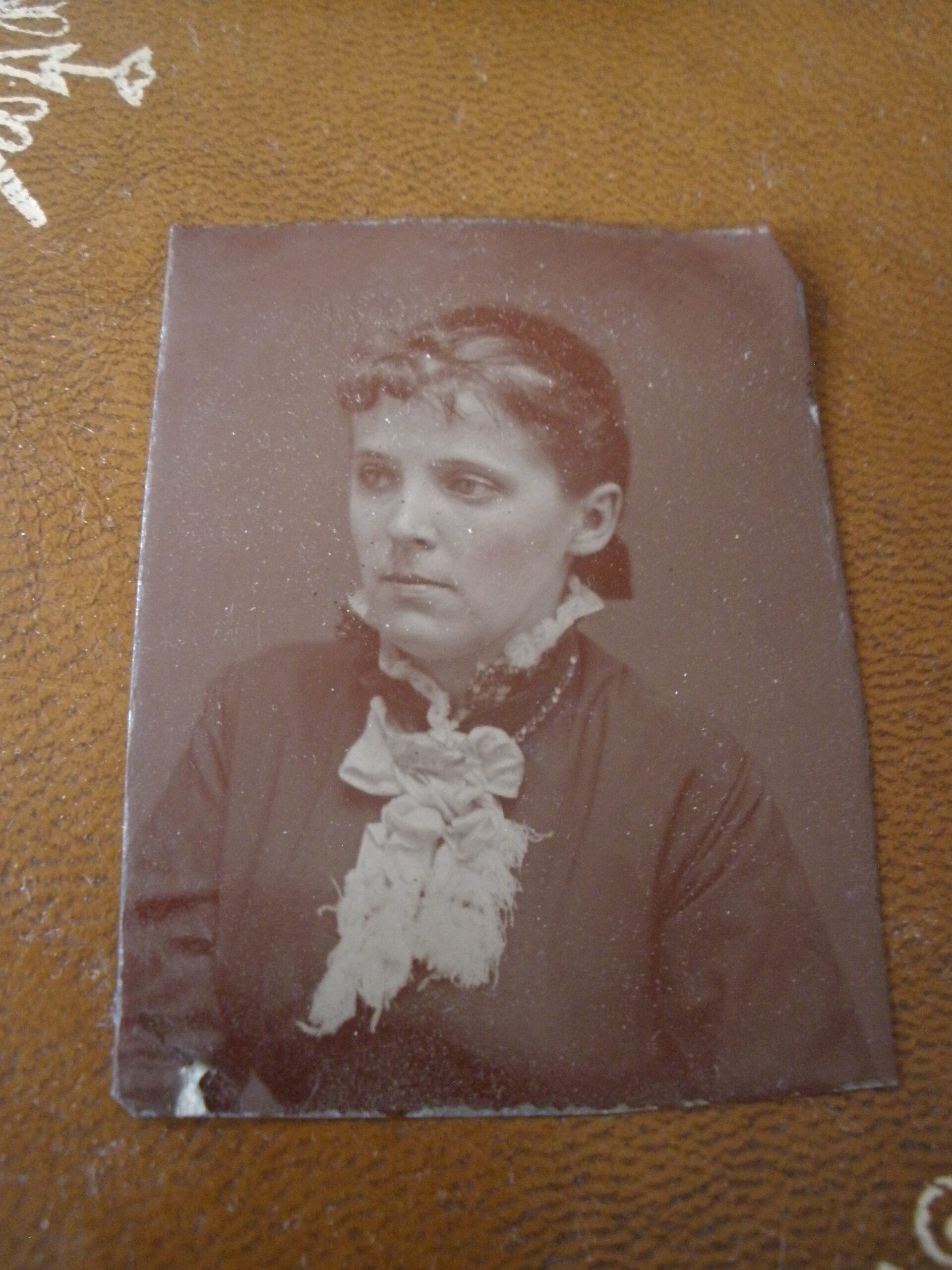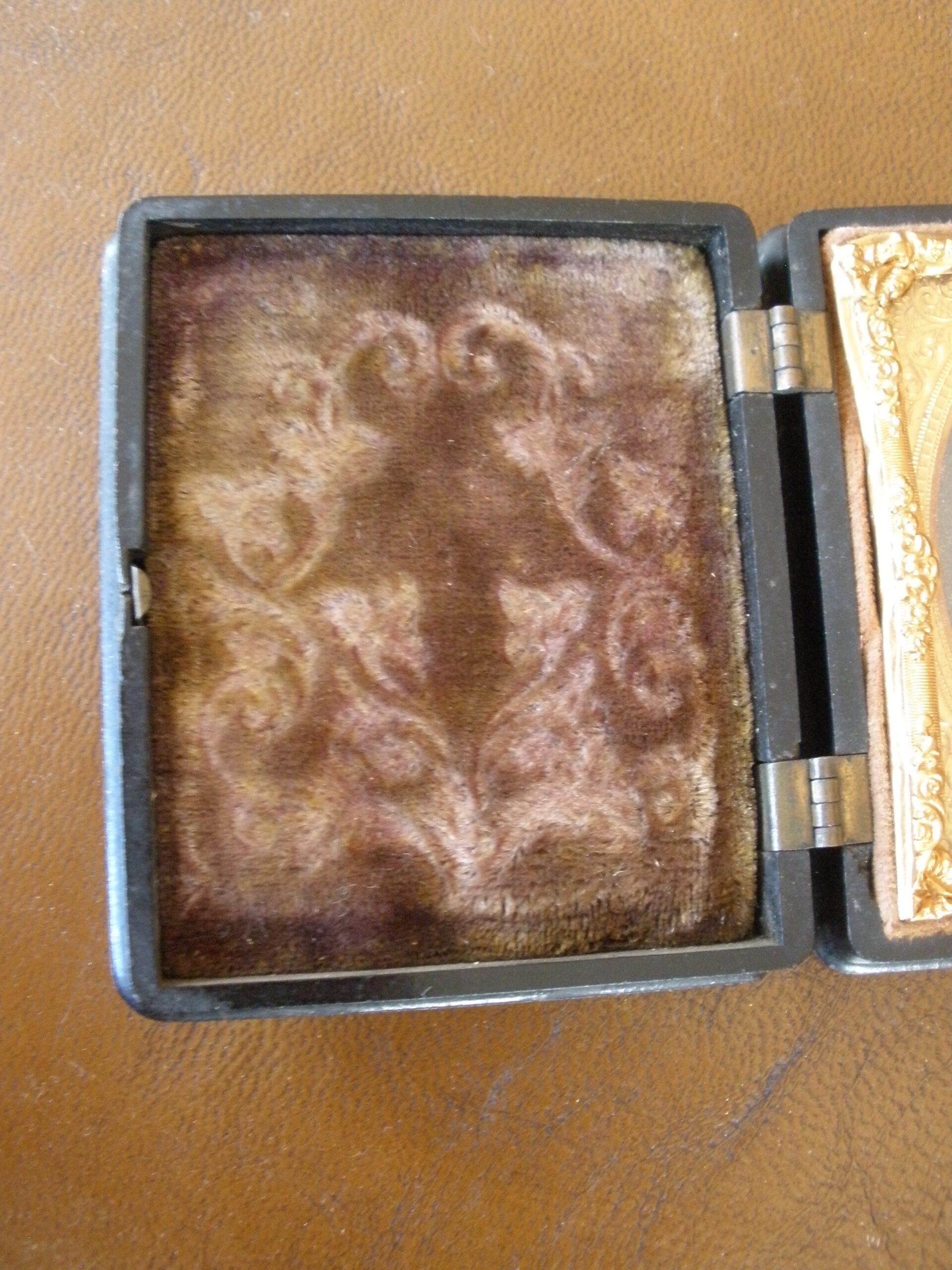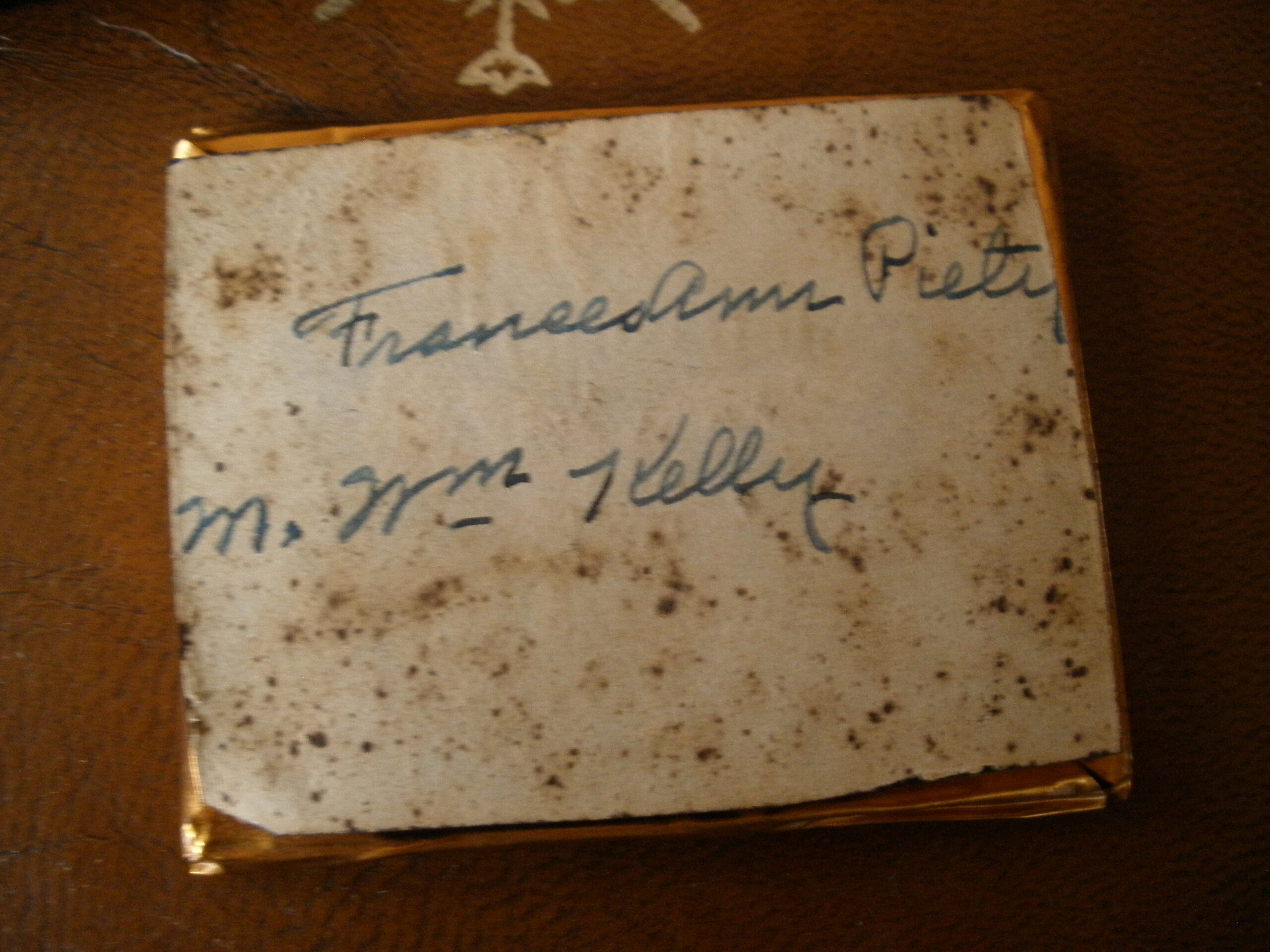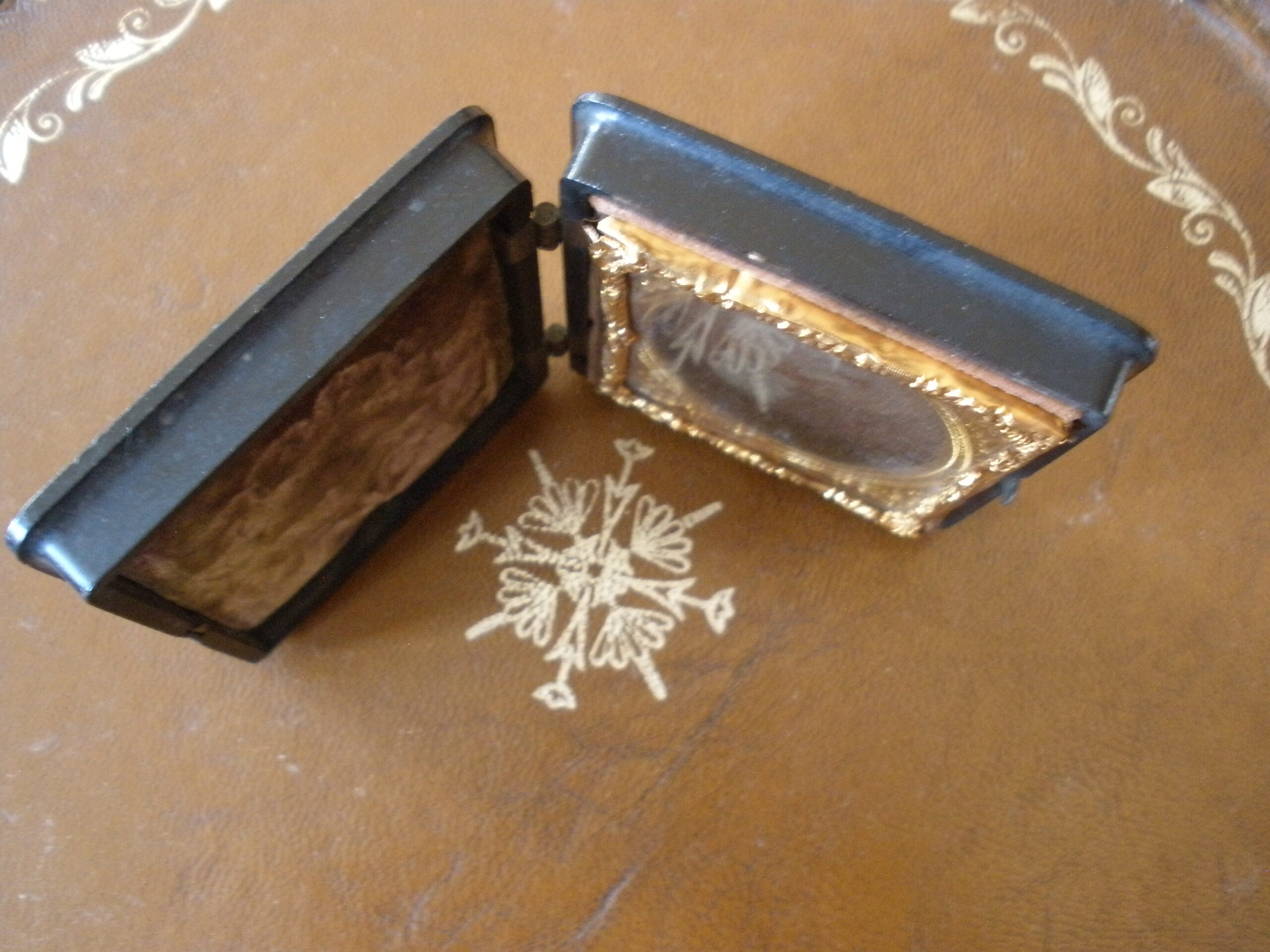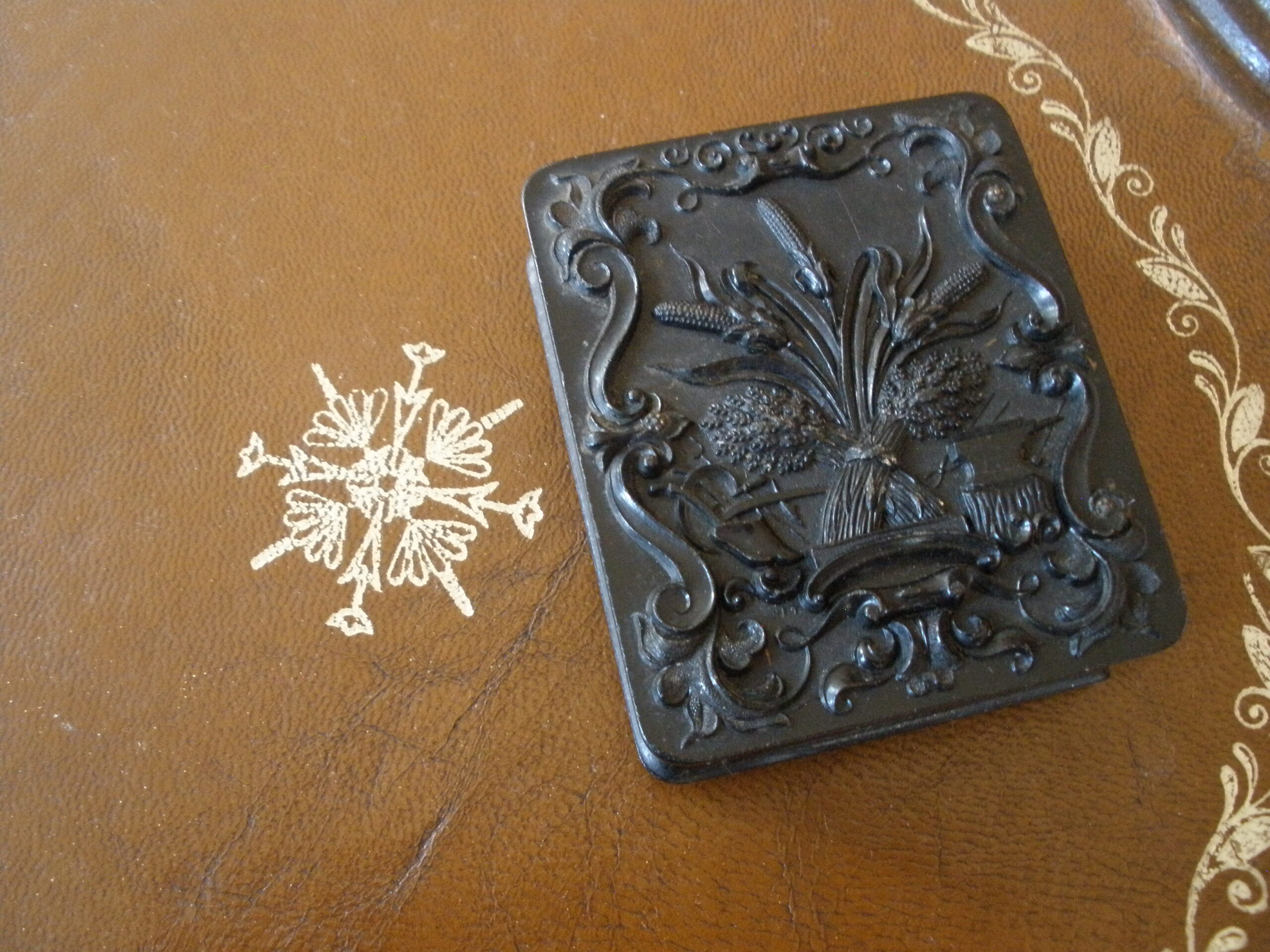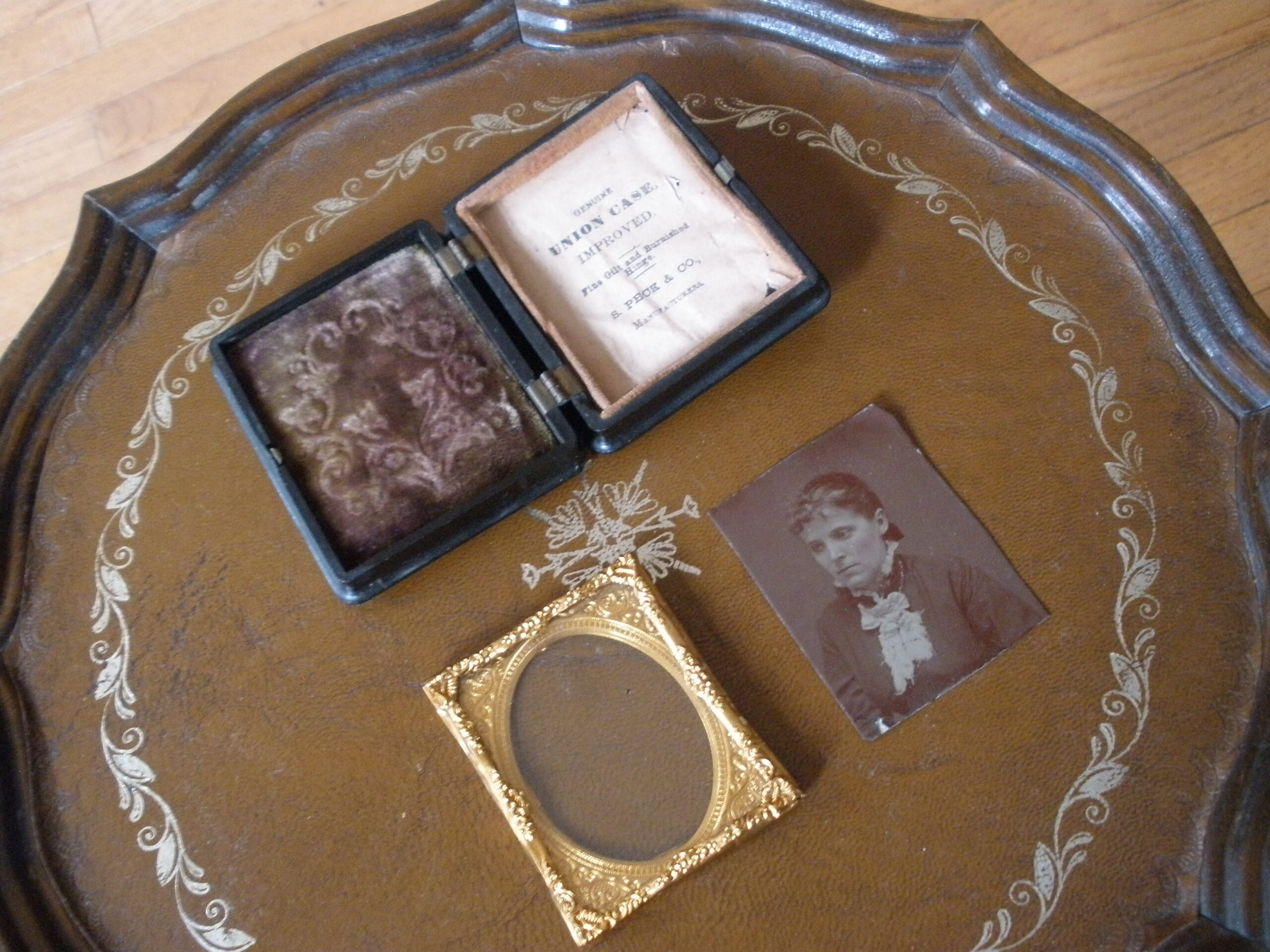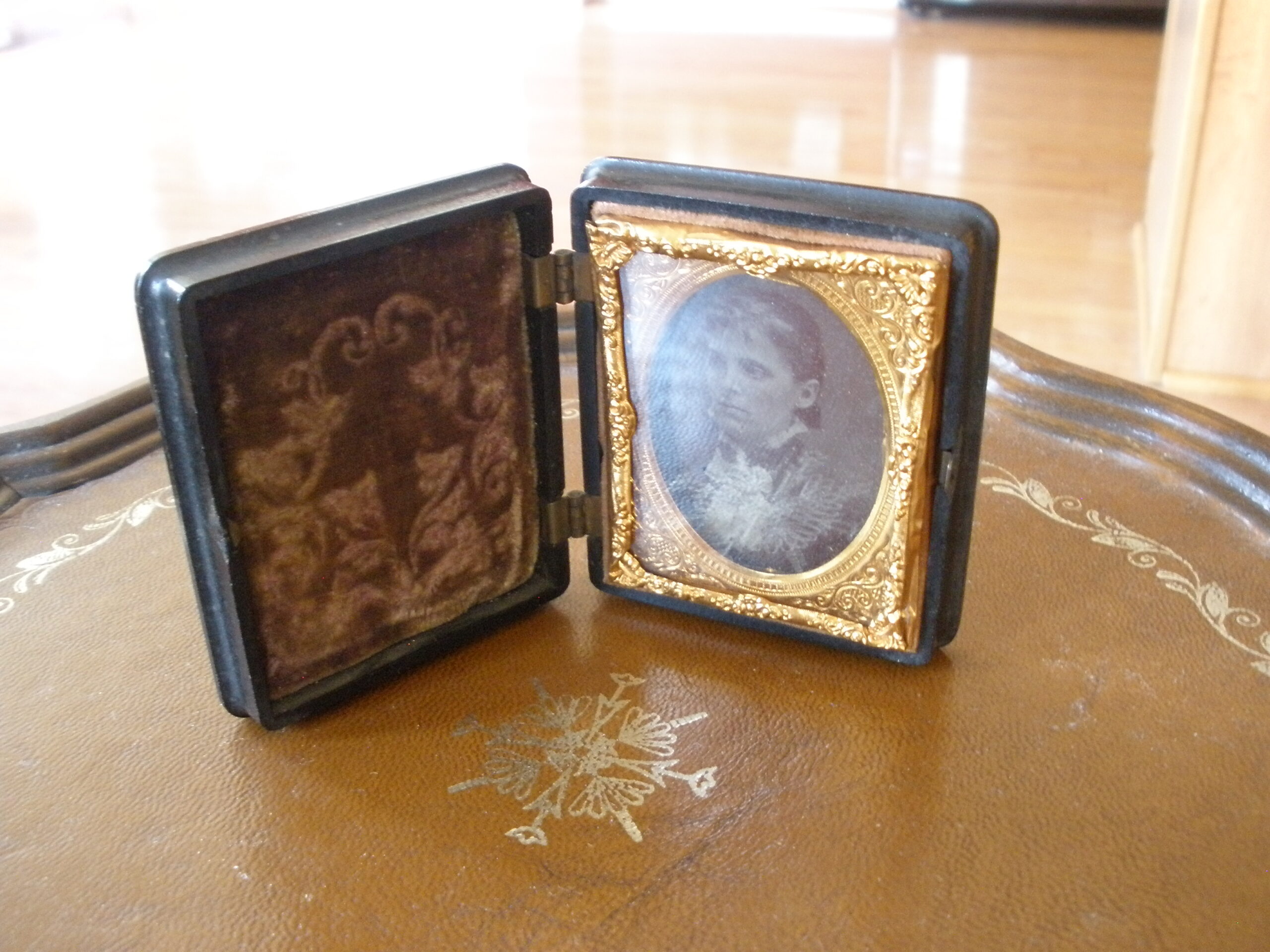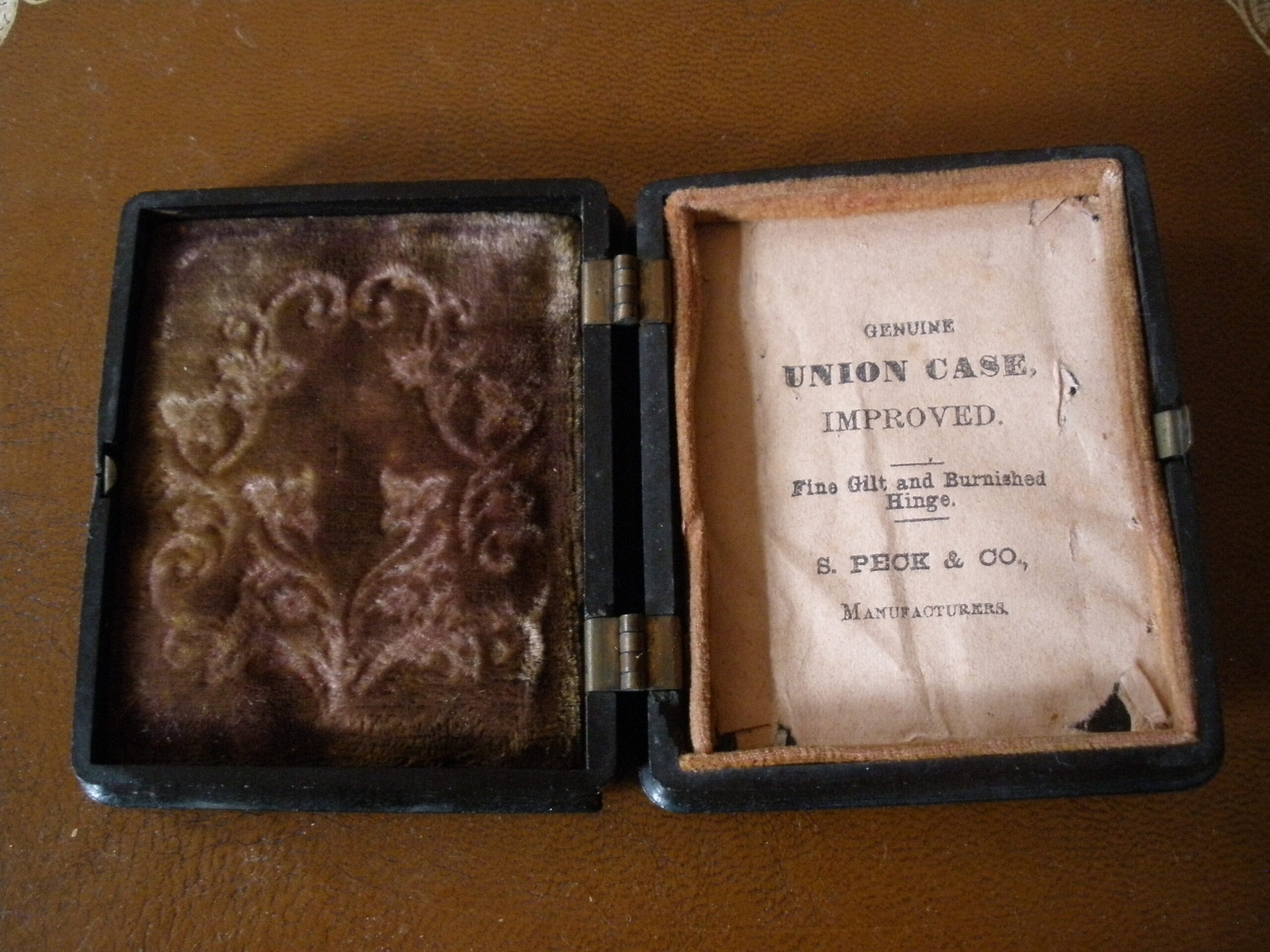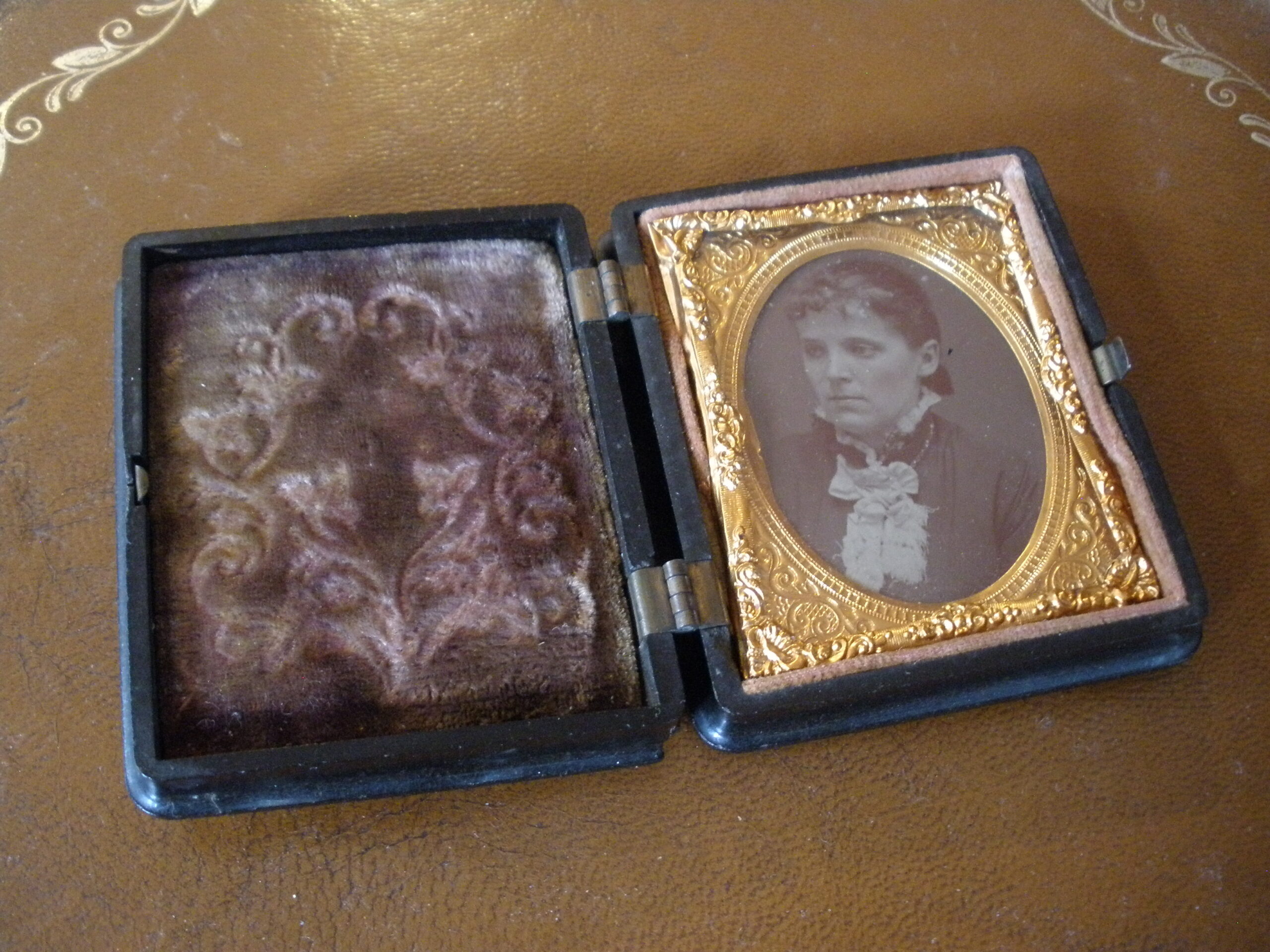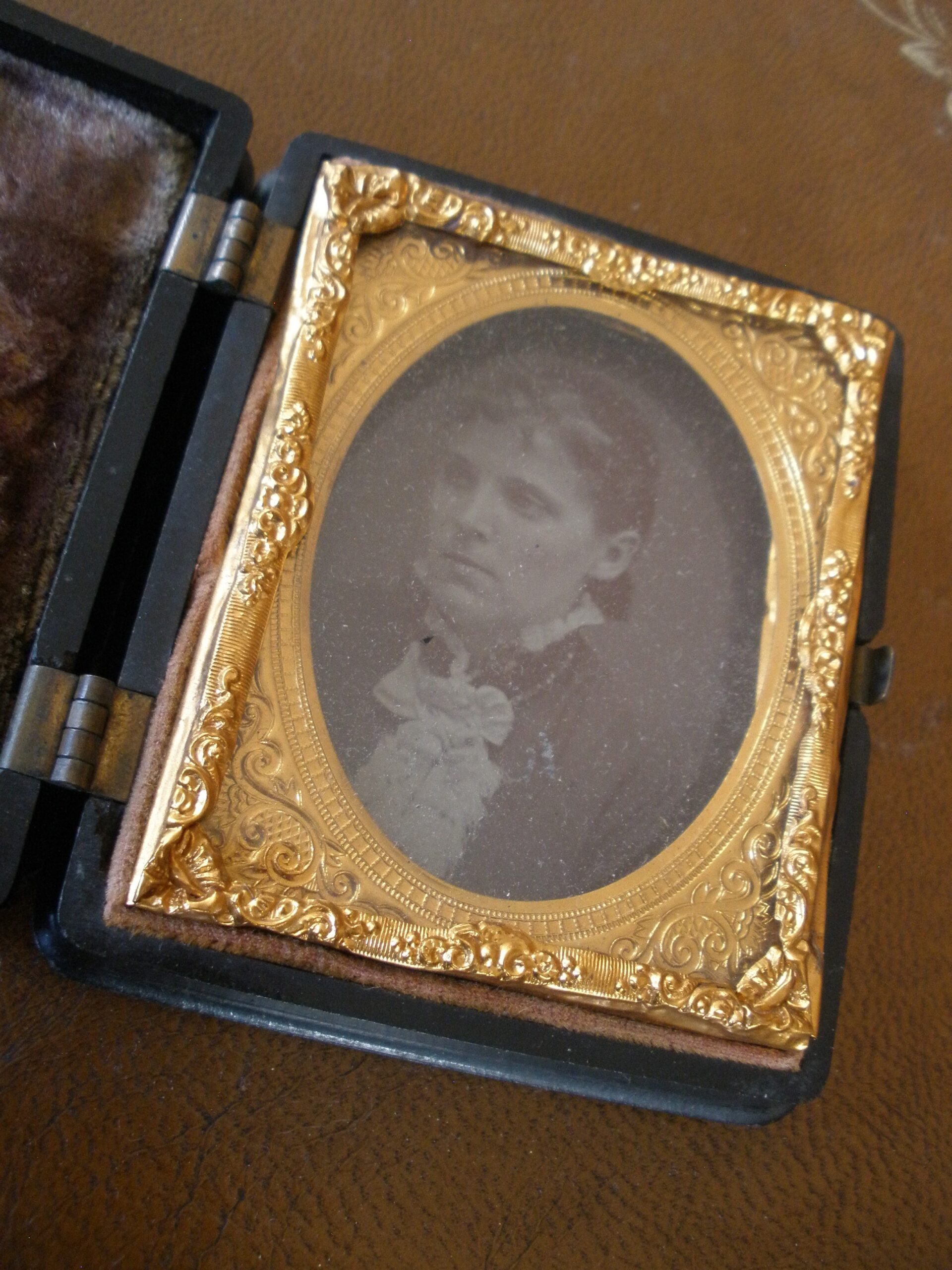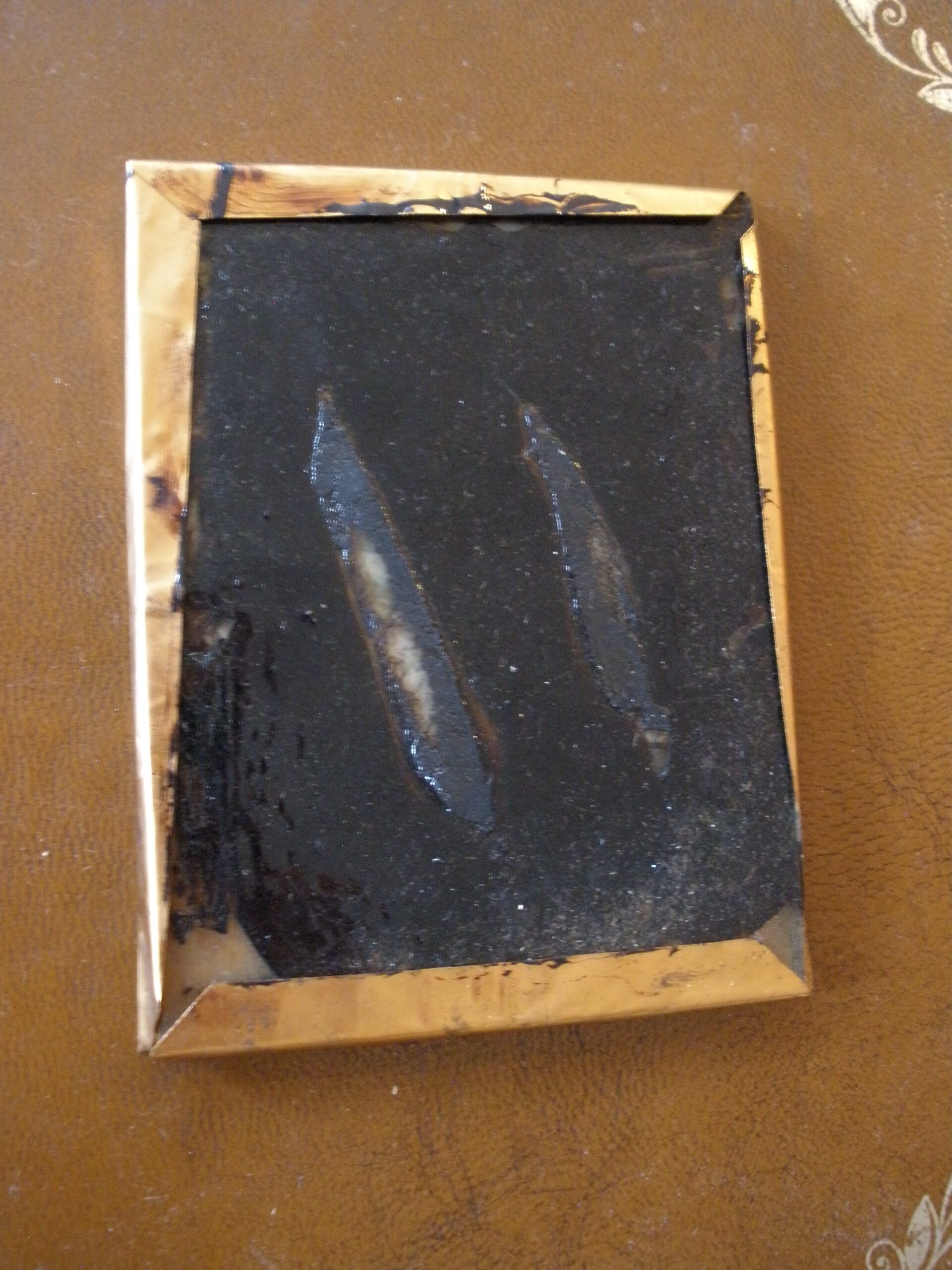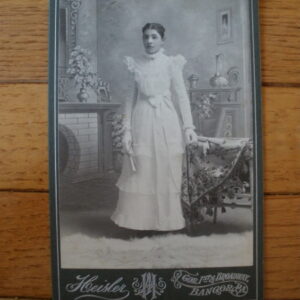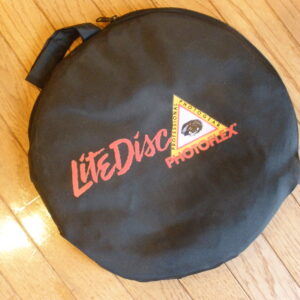or sale is an 1860s UNION CASE or GUTTA PERCHA PHOTOGRAPH CASE which includes a late 1800s tin type photograph of a woman named Frances Ann Piety who was born in 1854. This tin type photo was probably taken within of few years of when Frances was married in 1877. Frances was 23 years old in 1877. The thermoplastic case features an ornate agricultural theme design that features wheat, corn stalks, sickle, and an anvil on both sides of the case. The hinged case measures about 3 inches by 2 1/2 inches. The civil war era Union case was made by S. PECK & Company, the company that invented these cases. It’s rare to come across an antique photo and union case that has so much information and context of the subject of the portrait. A top notch historic and museum quality photography collectible.
Frances A. Piety was born on 15 August 1854, in Vigo, Indiana. When she was born, Her father, John Duncan Early Piety, was 23 and her mother, Eliza M Perry, was 26. In 1877, Frances married William Kelly in Clark, Illinois and they were the parents of at least 3 daughters. She died in 1946, at the age of 92, and was buried in Sullivan, Indiana. I also have a Union Case with a tintype photo of Francis’ mom for sale.
This case was made by the company founded by the made who invented the process to make the substance and process used to make the photograph case. In 1854, Samuel Peck received his patent for inventing the thermoplastic process. He produced a hard durable plastic from a mixture of wood and shellac that was pressed into a mold. The result was a plastic-like product that still looks good one hundred and fifty years later.
Samuel Peck was an American 19th-century photographer, artist, businessperson, photo case manufacturer, and gallery owner. He was based in New Haven, Connecticut and produced daguerrotypes before moving into the manufacture of cases for daguerrotypes. The New Haven Museum and Historical Society has an entire collection of Peck’s daguerrotype cases.
Gutta Percha consists chiefly of a hydrocarbon isomeric with rubber to make a hard durable thermoplastic substance. It is made from coagulated latex from trees which are found both wild and cultivated in Malaysia and Indonesia. Gutta Percha was America’s first plastic. In the context of antique photography, the cases made to house photos were called “thermoplastic cases”, “hard cases”, or “Union Cases.” The term Union comes from Peck who chose Union as the name to describe his process which was a union of shellac and sawdust.
A tintype is a photograph made by creating a direct positive on a thin sheet of metal coated with a dark lacquer or enamel and used as the support for the photographic emulsion. Tintypes enjoyed their widest use during the 1860s and 1870s, but lesser use of the medium persisted into the early 20th century. Tintype portraits were at first usually made in a formal photographic studio, like daguerreotypes and other early types of photographs. Later, tin types were most commonly made by photographers working in booths at fairs and carnivals, as well as by itinerant sidewalk photographers because a tintype could be developed and fixed and handed to the customer only a few minutes after the picture had been taken.
The tintype saw the Civil War come and go, documenting the individual soldier and horrific battle scenes. It captured scenes from the Wild West, as it was easy to produce by itinerant photographers working out of covered wagons. It began losing artistic and commercial ground to higher quality albumen prints on paper in the mid-1860s, yet survived for well over another 40 years, living mostly as a carnival novelty.

